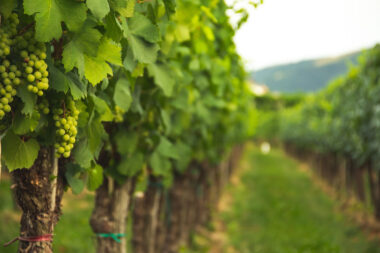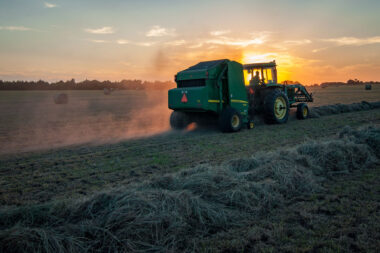Waste-derived biopesticides involve the exploration and utilization of organic waste materials to develop environmentally friendly alternatives for pest control in agriculture. This approach aims to address the environmental and health concerns associated with traditional chemical pesticides while making use of waste materials in an innovative and sustainable manner.
Key Aspects of Waste-Derived Biopesticides:
Definition of Biopesticides: Biopesticides are naturally occurring substances or microorganisms that are used to control pests, including insects, weeds, and diseases. Unlike conventional chemical pesticides, biopesticides are typically less harmful to non-target organisms, have lower environmental impacts, and are often more specific in their mode of action.
Utilization of Organic Waste Materials: The term “waste-derived” indicates that the raw materials for these biopesticides are sourced from organic waste. This waste can come from various agricultural, industrial, or municipal sources. Examples of organic waste materials include crop residues, food waste, and by-products from agricultural and food processing industries.
Eco-Friendly Alternative: The use of waste-derived biopesticides offers an eco-friendly alternative to traditional chemical pesticides. Chemical pesticides can have adverse effects on the environment, including soil and water pollution, harm to non-target organisms, and the development of pesticide-resistant pests. Biopesticides derived from waste materials are designed to minimize these negative impacts.
Production Process: The production process for waste-derived biopesticides typically involves the extraction or cultivation of natural compounds or microorganisms from organic waste. These may include beneficial bacteria, fungi, viruses, or bioactive compounds that exhibit pest control properties. The waste materials serve as a sustainable and cost-effective source of these bioactive substances.
Examples Of Waste-Derived Biopesticides:
Neem-based Biopesticides:
Source of Waste Material: Neem (Azadirachta indica) is a tree that is native to the Indian subcontinent. Neem leaves, seeds, and other parts of the tree are often considered waste materials after harvesting neem products like neem oil.
Biopesticide Production: Neem oil, extracted from neem seeds, contains compounds such as azadirachtin, which have insecticidal properties. This oil can be used to produce biopesticides that are effective against a wide range of pests, including insects and nematodes.
Eco-Friendly Alternative: Neem-based biopesticides are considered environmentally friendly due to their biodegradability and low toxicity to non-target organisms. They are used in organic farming and integrated pest management systems.
Bacillus thuringiensis (Bt) Biopesticides:
Source of Waste Material: Bacillus thuringiensis (Bt) is a naturally occurring bacterium found in soil. While the bacterium itself is not waste, the spores and toxins produced during its fermentation process can be utilized.
Biopesticide Production: Bt produces crystal proteins (Cry proteins) during sporulation that are toxic to certain insects. These proteins can be harvested and formulated into biopesticides. The fermentation byproducts become waste material.
Eco-Friendly Alternative: Bt biopesticides are highly specific to certain insect groups and do not harm beneficial insects, animals, or humans. They are commonly used to control caterpillar pests in agriculture.
Coffee Grounds-based Biopesticides:
Source of Waste Material: Used coffee grounds, generated as a by-product of coffee brewing, are often considered waste.
Biopesticide Production: Compounds in coffee grounds, such as caffeine, have been explored for their insecticidal properties. Researchers have investigated the potential of using coffee extracts as a biopesticide against certain pests.
Eco-Friendly Alternative: Using coffee grounds to produce biopesticides provides a way to repurpose a common waste product while potentially offering a sustainable and eco-friendly pest control
Citrus Peel-based Biopesticides:
Source of Waste Material: Citrus peels, discarded from the citrus fruit processing industry or from households, are a significant waste stream.
Biopesticide Production: Compounds found in citrus peels, such as limonene and other essential oils, possess insecticidal and repellent properties. These compounds can be extracted and formulated into biopesticides effective against certain pests.
Eco-Friendly Alternative: Utilizing citrus peel waste for biopesticide production provides a sustainable and eco-friendly solution. The biopesticides derived from citrus peels can be used in integrated pest management practices.
Pineapple Crown Extract-based Biopesticides:
Source of Waste Material: Pineapple crowns, the leafy top part of the pineapple fruit, are often discarded as agricultural waste.
Biopesticide Production: Extracts from pineapple crowns contain bioactive compounds with insecticidal and nematicidal properties. These compounds can be harnessed to create biopesticides effective against certain pests, including nematodes.
Eco-Friendly Alternative: Repurposing pineapple crown waste for biopesticide production not only addresses waste management concerns but also provides a natural and eco-friendly alternative for pest control in agriculture.
Hardware
The hardware required for waste-derived biopesticide research and production can vary depending on the specific processes and techniques involved. Some general categories of hardware commonly used in biopesticide research and production are:
1. Laboratory Equipment:
Microscopes: For the examination of microorganisms and structures in the development of biopesticides.
Centrifuges: Used for the separation of components in liquid samples.
Incubators: Maintain controlled temperature and humidity conditions for the cultivation of microorganisms.
Autoclaves: Sterilize equipment and media to prevent contamination.
pH Meters and Conductivity Meters: Measure and control the acidity and conductivity of solutions.
2. Extraction and Formulation Equipment:
Extraction Units: Equipment for extracting bioactive compounds from waste materials.
Rotary Evaporators: Used to concentrate extracts by removing solvents.
Spray Dryers: Convert liquid extracts into powder form for easier formulation.
Mixers and Blenders: Homogenize and mix ingredients during formulation.
3. Fermentation Equipment:
Bioreactors: Used for the large-scale cultivation of microorganisms, such as bacteria or fungi, for the production of biopesticides.
Aeration Systems: Provide oxygen to microorganisms during fermentation.
Monitoring and Control Systems: Measure and control parameters like temperature, pH, and agitation during fermentation.
4. Field Application Equipment:
Sprayers: Apparatus for applying biopesticides to crops in the field.
Tractors or Vehicles: For transporting and applying biopesticides on a larger scale.
5. Analytical Instruments:
Gas Chromatography (GC) and High-Performance Liquid Chromatography (HPLC): Used for analyzing the composition of biopesticide formulations.
Mass Spectrometry (MS): Identifies and quantifies compounds in biopesticide samples.
6. Safety Equipment:
Personal Protective Equipment (PPE): Including gloves, lab coats, goggles, and masks to ensure the safety of researchers handling potentially hazardous materials.
7. Data Recording and Analysis Tools:
Computers and Software: Used for data recording, analysis, and simulation in biopesticide research.
8. Greenhouse Facilities (for Plant Trials):
Greenhouse Structures: Controlled environments for conducting plant trials.
Environmental Control Systems: Regulate temperature, humidity, and light conditions.
Approaches and Trends in Waste-Derived Biopesticide Production
Bioprocess Optimization:
Overview: The optimization of fermentation processes for the production of biopesticides derived from waste materials.
Details: Researchers work on refining fermentation conditions, such as temperature, pH, and nutrient availability, to maximize the yield of bioactive compounds from waste sources.
Extraction and Formulation Techniques:
Overview: Innovative methods for extracting and formulating bioactive compounds from waste materials into effective biopesticides.
Details: Techniques may include novel extraction methods, such as ultrasound-assisted extraction or supercritical fluid extraction, to improve the efficiency of obtaining bioactive components. Formulation methods are designed to enhance stability and efficacy.
Metabolic Engineering:
Overview: Genetic modification of microorganisms to enhance their ability to produce specific bioactive compounds for use in biopesticides.
Details: Researchers may employ metabolic engineering to manipulate the metabolic pathways of microorganisms, optimizing their capacity to synthesize target compounds from waste-derived substrates.
Systems Biology Approaches:
Overview: Utilizing systems biology tools to understand the complex interactions within microbial systems involved in biopesticide production.
Details: Systems biology combines computational modeling and experimental data to gain insights into the metabolic and regulatory networks of microorganisms used in the production of biopesticides.
Nanoformulations:
Overview: Creating nano-sized formulations of biopesticides for improved delivery and efficacy.
Details: Nanoformulations may enhance the stability and bioavailability of biopesticides, allowing for more targeted and controlled delivery to pests while reducing environmental impact.
Biological Waste Valorization:
Overview: Exploring the use of specific waste streams, such as agricultural residues or food processing by-products, as feedstocks for biopesticide production.
Details: Researchers investigate the potential of converting various waste materials into valuable biopesticides, aligning with the principles of a circular economy.
Machine Learning and Predictive Modeling:
Overview: Using machine learning algorithms and predictive modeling to optimize biopesticide production processes.
Details: These techniques can analyze large datasets and identify patterns to predict optimal conditions for biopesticide production, reducing the time and resources needed for experimentation.
Advantages:
Reduced Environmental Impact: Biopesticides derived from waste materials generally have a lower environmental footprint compared to synthetic chemical pesticides.
Target-Specific Action: Many biopesticides are specific to certain pests, minimizing harm to beneficial insects, birds, and other non-target organisms.
Biodegradability: Biopesticides tend to break down more quickly in the environment, reducing the risk of residual effects.
Challenges and Research Areas:
Efficacy: Ensuring the effectiveness of waste-derived biopesticides in controlling pests is a critical research area.
Scale-up and Commercialization: Developing scalable and economically viable production processes for biopesticides derived from waste materials.
Regulatory Approval: Meeting regulatory requirements for the registration and approval of biopesticides in different regions.
Overall, waste-derived biopesticides represent an innovative and sustainable approach to pest management in agriculture, contributing to the development of more environmentally conscious and ecologically sustainable farming practices. Researchers continue to explore and refine these biopesticides to enhance their efficacy, scalability, and adoption in mainstream agricultural practices.



